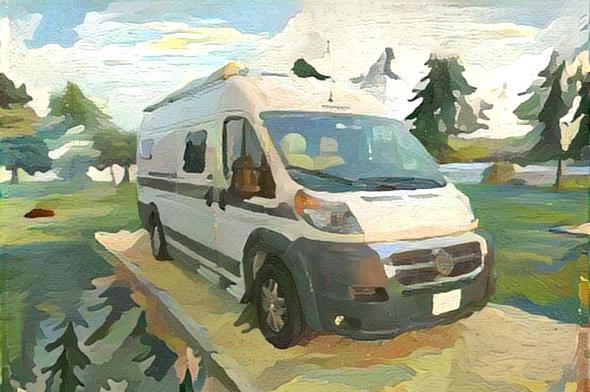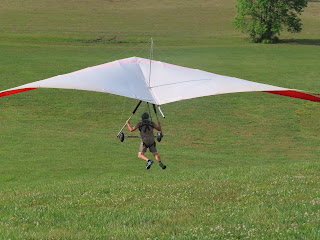''We don't know them all, but we owe them all''
Unknown
As far as we could see ... small white tombstones ... almost touching each other ... in seemingly endless rows ... nearly 13,000 in all. We had arrived in Georgia, a state that is full of Civil War history. There are many battlefield memorials that we could have visited, but we wanted to pay homage to the other type of war hero ... the prisoner-of-war. We arrived at Andersonville National Historical Site, location of the notorious confederate prisoner-of-war camp. In operation from February 1864 until April 1865, the camp imprisoned approximately 45,000 captured Union soldiers, with nearly one-third not surviving to see the end of the war. The simple plaque at the entrance succinctly summarized the somber site that we were about to enter. 
Near to the city of Andersonville, Georgia, the Confederate government constructed its largest military prison during the Civil War. The site of Camp Sumter, which is commonly known as Andersonville, was chosen because of its remote location, favorable weather conditions, and large amount of open land that provided some access to food and water. The captured soldiers were transported in crowded trains to this small town in southwestern Georgia beginning in February 1864.
From the station, they began their mile walk down a dusty road to their uncertain future. Along the way, angry townspeople shouted and jeered at them.
As they entered the wooden stockade, a large, muddy open-air field and an uncertain future lie ahead of them. There was no housing provided. The only clothing, shoes, and bedding that they could expect was what they had with them when they entered the compound. The meagerly daily ration of food would be a small piece of cornbread and a little piece of raw meat that they would have to figure out how to cook. Safe drinking water was a precious yet scarce commodity.
Andersonville was originally built on sixteen acres of land and designed to hold 10,000 men. As the numbers of prisoners quickly increased, the area was expanded another ten acres, but it was still no way near to being large enough to hold or provide basic necessities of food, water, and shelter for the men.
Cannons lined the perimeter of the prison to deter any riots or attempted escapes.
The sixteen foot tall wooden stockade wall was built using logs of surrounding pine trees. The logs were placed so close together that prisoners couldn't see anything outside the walls. Sentry boxes were located close together at the top of the stockade and staffed with sharp-shooting guards around the clock.
As we walked around the one-mile perimeter, we noted the white posts that indicated where the stockade walls were located. Just inside of the stockade line were the ''deadline'' posts. This is where a small wooden rail was located between the camp yard and stockade walls. Guards had orders to shoot any prisoner who crossed the ''deadline''.
On the southern side of the camp was Star Fort, the headquarters for the prison's commanders, General John Winder and Captain Henry Wirz. From this vantage point, we tried to imagine what it would be like to look out and see tens of thousands of men in the hot Georgia sun struggling to survive.
Prisoner-of-war conditions were miserable at best. No shelter was provided, so soldiers had to forge and trade for materials to build make-shift tents. Water was obtained from a small stream that ran through the camp. Unfortunately, this stream that served as drinking water also was used for bathing and as the latrine. Couple that with a scant supply of food, and it is not hard to imagine how dysentery and diarrhea swept through the camp contributing to the high death rate.
What is so amazing is that despite the harsh conditions these soldiers faced, there were so many stories of courage, friendship, and faith. As we approached a small stone structure, we sensed a certain ''sacredness'' about it.
This simple monument houses Providence Spring. In August of 1864, clean water was becoming scarcer as the population increased and the temperatures soared. During a fierce thunderstorm, this spring was unearthed in the middle of the camp. Considered ''providential'' in the timing of its appearance, this miraculous water source was named Providence Spring in gratitude for its life-saving clean water that still flows today.
After our walk around the prison site, we drove a short ways down the road to see the Andersonville National Cemetery. At the entrance, a striking sculpture of three comrades reminded us of where these brave men got their strength ... from the support of each other and from God. The quote reads:
''Turn you to the Stronghold, ye prisoners of Hope''
Here the 13,000 fallen heros of Camp Sumter are buried in simple graves shoulder-to-shoulder alongside their fellow soldiers. One of the prisoners who worked in a camp hospital was in charge of recording the names of the dead and their burial site number. Because of his meticulous records, there are less than 500 who remain ''unknown''.
I had downloaded a narrative tour of the burial grounds from the National Cemetery website, and as I walked around and listened, I was drawn into some of these heros' stories.
Adam Swarner's name is on tombstone number one.
He was one of the first prisoners to arrive on February 25, 1864.
Already ill after spending time in a POW camp in
Richmond, VA, he died on February 27, 1864.
Some, like this soldier,
are known only to God.
This marker has a name, but is still surrounded
in mystery. A stone dove appeared on the top of
Lewis S Tuttle's gravestone shortly after
the cemetery's dedication ceremony.
To this day, no one is really sure how or why it is there.
States of the Union who lost soldiers at
Andersonville erected monuments on the
prison site and around the cemetery.
The Minnesota monument features a young
soldier silently honoring his fallen comrades.
''They fell, but o'er their glorious grave
floats free the banner
of the cause they died to save''
Unknown
A visit to Andersonville was a somber walk through one of the darkest periods of our country's history. And as Memorial Day approaches, it is in places such as these that we are reminded to give thanks to our everyday heros who gave so much to ensure that we are able to continue to enjoy the beauty of our freedom.

































































